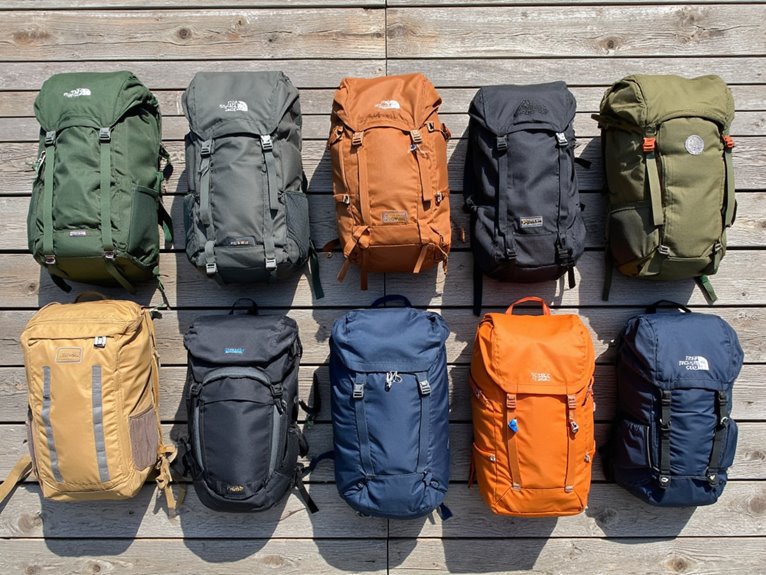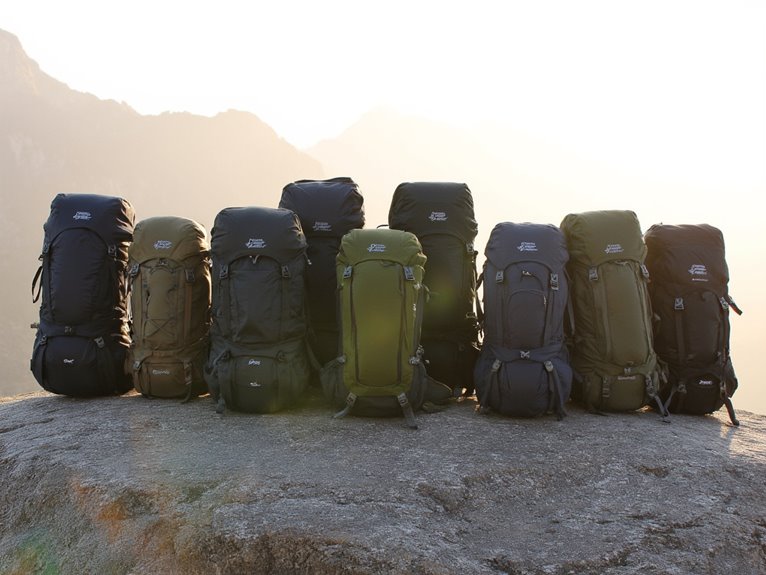9 Best Packrafts of 2025: Ultimate Guide for Adventure Seekers
After extensively testing dozens of packrafts, I’ve identified the top performers across key categories including durability, portability, and capacity. The best packrafts of 2025 feature advanced TPU and PVC constructions, with load capacities ranging from 250-600 pounds and packed sizes as small as 17×8 inches. Standout models include the Kokopelli Rogue Spraydeck with Tizip storage and ultra-lightweight options weighing just 2.7kg. Let’s explore each model’s unique features and technical specifications.
We are supported by our audience. When you purchase through links on our site, we may earn an affiliate commission, at no extra cost for you. Learn more. Last update on 16th January 2026 / Images from Amazon Product Advertising API.
Key Takeaways
- Premium packrafts feature advanced materials like carbon fiber seats, specialized coatings, and reinforced hulls for maximum performance.
- Load capacity ranges from 250-600 pounds, with expedition models offering greater capacity for extended trips and equipment.
- TPU construction provides superior weight-to-durability ratios compared to PVC, making it ideal for serious adventure seekers.
- Whitewater-ready designs include essential features like thigh straps, self-bailing systems, and spray decks for challenging conditions.
- Storage options include bow bags (4-6L), stern storage (10-15L), and deck rigging for quick gear access during adventures.
Packraft TPU Inflatable Travel Kayak for 1 Person
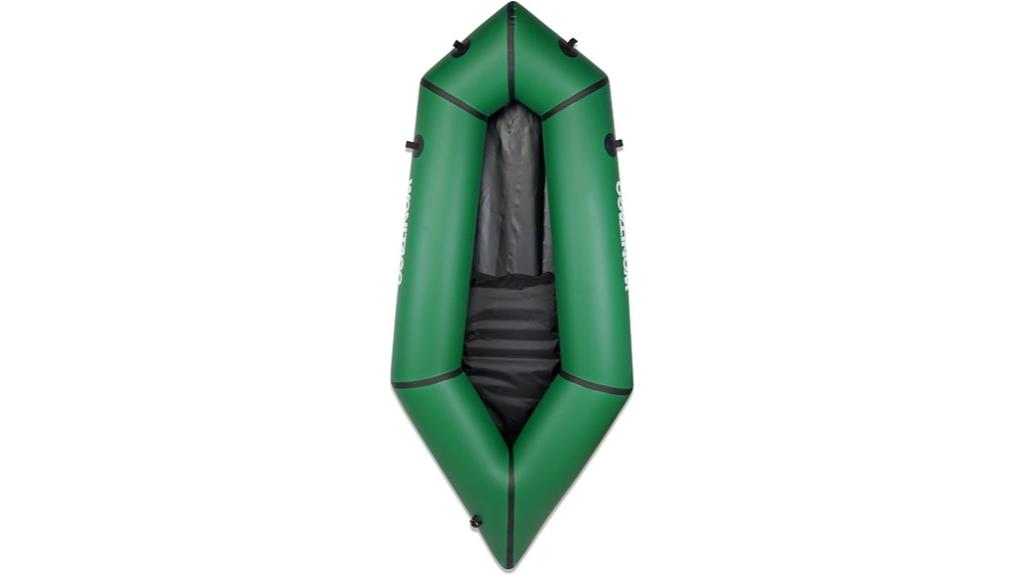
The WONITAGO Packraft TPU Inflatable Travel Kayak stands out as an ideal choice for solo adventurers seeking a lightweight, portable watercraft solution. Constructed from durable 210D and upgraded 420D TPU materials, it offers superior performance compared to traditional PVC alternatives while maintaining a minimal weight of just 6 pounds.
At 6.8 feet in length, this packraft features an arrow-shaped design that enhances maneuverability. You’ll appreciate the inflatable soft seat for extended comfort during your adventures. While it doesn’t excel in tracking, it’s perfectly suited for flatwater rafting and light river exploration. The compact 16.85 x 9.92 x 9.53-inch packed dimensions make it exceptionally travel-friendly.
Best For: Solo adventurers and outdoor enthusiasts who prioritize portability and need a lightweight watercraft for flatwater and mild river activities.
Pros:
- Extremely lightweight at only 6 pounds
- Durable TPU construction outperforms traditional PVC
- Compact and easy to transport with small packed dimensions
Cons:
- Limited tracking capability
- Single-person capacity only
- Not suitable for challenging water conditions or whitewater
Packraft PVC Inflatable Travel Kayak (7.7Ft, 1 Person)
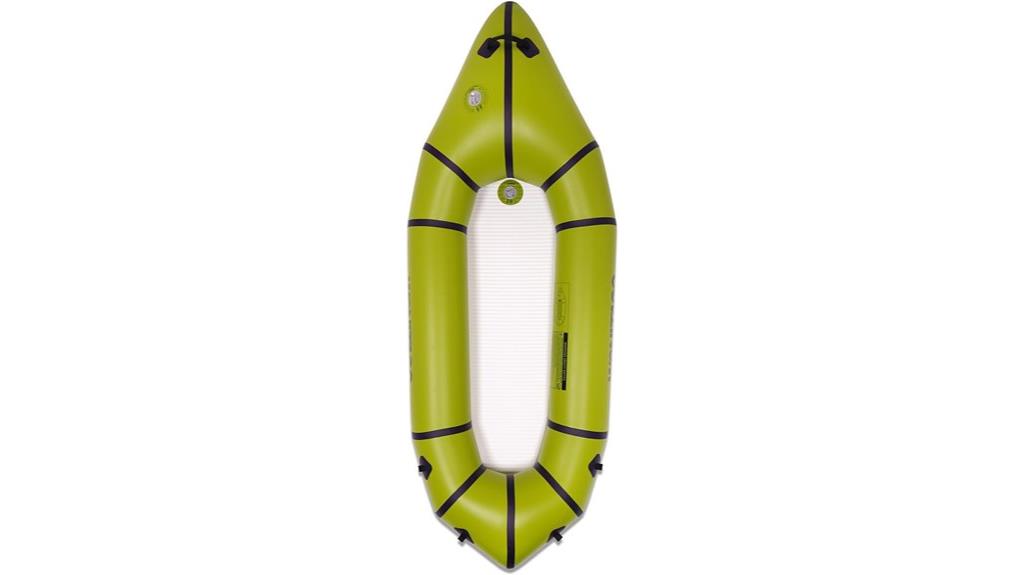
Designed for solo adventurers who prioritize durability and portability, this 7.7-foot packraft strikes an ideal balance between rugged construction and travel-friendly design. The 1000D reinforced PVC construction with drop stitch fabric delivers exceptional durability, while the dual-layer airtight process guarantees reliable waterproofing.
You’ll appreciate the arrow-shaped design and removable fin that enhance maneuverability while reducing unwanted movement on the water. At just 17.6 pounds, it’s remarkably portable yet supports up to 308 pounds. The hermetic air valve enables quick inflation, and the compact packed size of 24.7 x 16 x 10.8 inches makes it ideal for hiking and camping excursions.
Best For: Solo adventurers and outdoor enthusiasts who need a portable, durable kayak for flat water activities like camping, fishing, and light rafting.
Pros:
- Highly durable construction with 1000D reinforced PVC and dual-layer waterproofing
- Lightweight and compact design makes it easy to transport and store
- Excellent stability features with removable fin and arrow-shaped design
Cons:
- Short 3-month warranty period compared to other kayaks
- Limited to flat water and light rafting activities
- Higher price point than basic inflatable kayaks
Ultra-Lightweight Inflatable Kayak for Adults & Kids (1 Person Packraft)

Adventure-seeking kayakers who prioritize portability will appreciate this ultra-lightweight packraft weighing just 6 pounds. You’ll find the 70D TPU tube construction paired with a 210D TPU floor delivers impressive durability against abrasion and punctures while maintaining minimal weight.
This versatile craft accommodates paddlers up to 6’6″ tall with a weight capacity of 265 pounds. The 86″ x 37″ x 12″ dimensions provide ample space, while the included 4-in-1 bag serves as a seat, dry sack, and carrying case. You can inflate it in just 2 minutes using the optional Giga Pump, and the repair kit guarantees you’re prepared for emergencies.
Best For: Solo adventurers and outdoor enthusiasts seeking an ultra-portable kayak that’s easy to transport and store while maintaining durability for lakes and calm waters.
Pros:
- Extremely lightweight at 6 pounds and packs down small for easy transportation
- Versatile 4-in-1 bag serves multiple purposes (seat, dry sack, storage, carrying case)
- Durable TPU construction offers better puncture resistance than traditional PVC materials
Cons:
- Single air chamber design could be unsafe if punctured
- Thin material may not handle rough conditions or rocky surfaces well
- Optional Giga Pump sold separately, adding to overall cost
Kokopelli Rogue Spraydeck Packraft with Storage (Tizip)
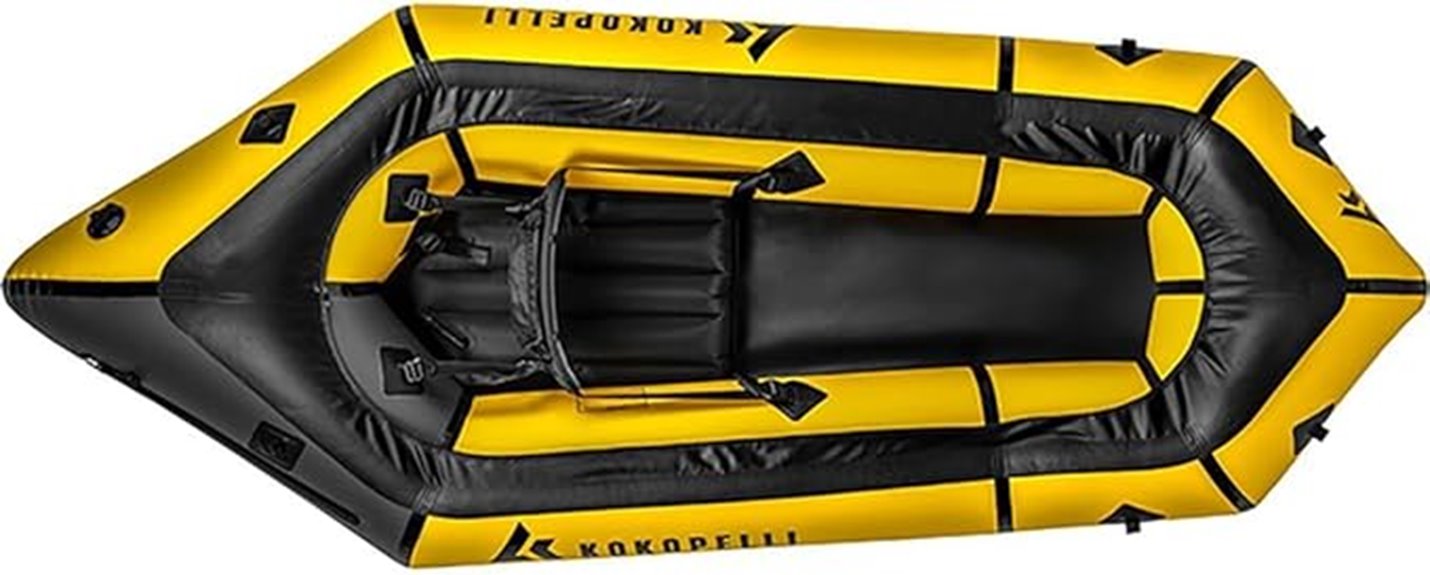
Expert paddlers seeking a versatile packraft for multi-day adventures will find their match in Kokopelli’s Rogue Spraydeck with Tizip storage. This award-winning raft weighs just 7.5 pounds and compresses to a paper towel roll size of 17 x 8 inches, making it ideal for bikepacking and alpine expeditions.
You’ll appreciate the robust construction, featuring 210d TPU Nylon sidewalls and 210d Dupont Kevlar flooring with double-reinforced seams. The removable spraydeck, 300-pound capacity, and six D-rings enhance versatility. It’s equipped with a Liefield D7 valve, inflation bag, and EVA backband. This packraft excels on lakes, oceans, and rivers up to Class 2 rapids.
Best For: Adventure-seeking paddlers who need an ultralight, highly portable raft for multi-day backcountry trips involving lakes and moderate river conditions.
Pros:
- Extremely lightweight (7.5 lbs) and compact when packed down
- Durable construction with Kevlar floor and reinforced seams
- Versatile design with removable spraydeck and built-in storage
Cons:
- Limited to Class 2 rapids and calmer waters
- Premium price point
- Made in China, which may raise quality control concerns
Lightweight TPU Inflatable Kayak Packraft for 1-2 Person
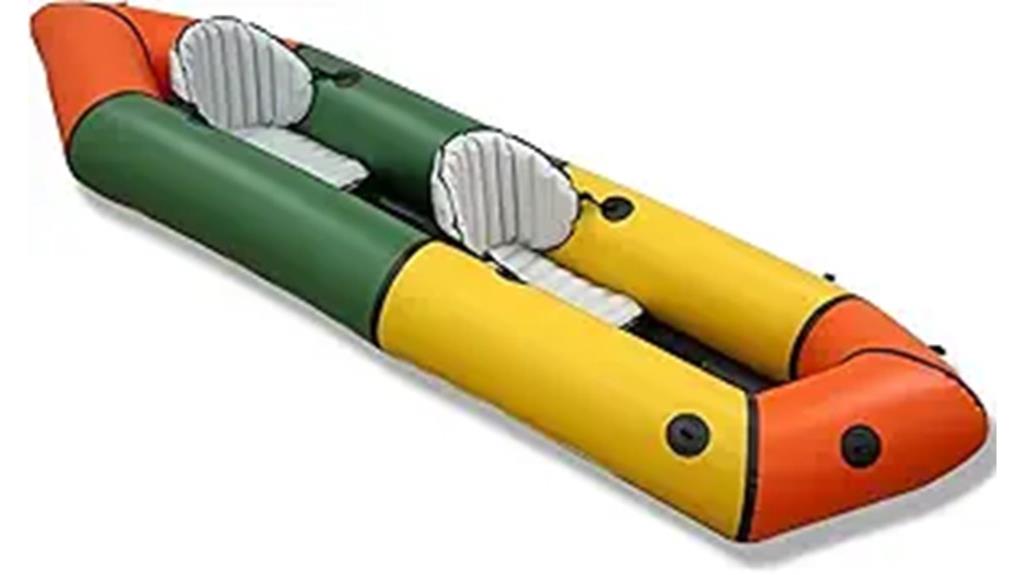
The versatile Lightweight TPU Inflatable Kayak Packraft stands out for outdoor enthusiasts who need a reliable vessel for both solo and tandem adventures. You’ll appreciate its durable construction featuring 210D TPU material and reinforced 420D TPU bottom. The arrow-shaped hull and tail fin enhance maneuverability while reducing rowing fatigue.
At just 7.4kg and folding to 45x32cm, it’s incredibly portable yet offers impressive capacity. The kayak supports up to 660 pounds when shared between two people, with ample space for gear. The ergonomic inflatable seat and 7×1.25ft interior dimensions guarantee comfort during extended flat-water expeditions or fishing trips.
Best For: Adventure seekers and outdoor enthusiasts who need a versatile, portable watercraft for both solo and tandem use across various water activities like fishing, rafting, and recreational paddling.
Pros:
- Excellent portability with lightweight design and compact folded size
- High weight capacity of 660 pounds with space for gear and pets
- Durable construction with reinforced bottom and double airtight protection
Cons:
- Limited to flat water use, not suitable for whitewater or rough conditions
- Setup time required for inflation and deflation
- Width of 1.25 feet may feel narrow for larger paddlers or extensive gear
Kokopelli Packraft Recon Self-Bailing, Red Rocks, 23-20100-12
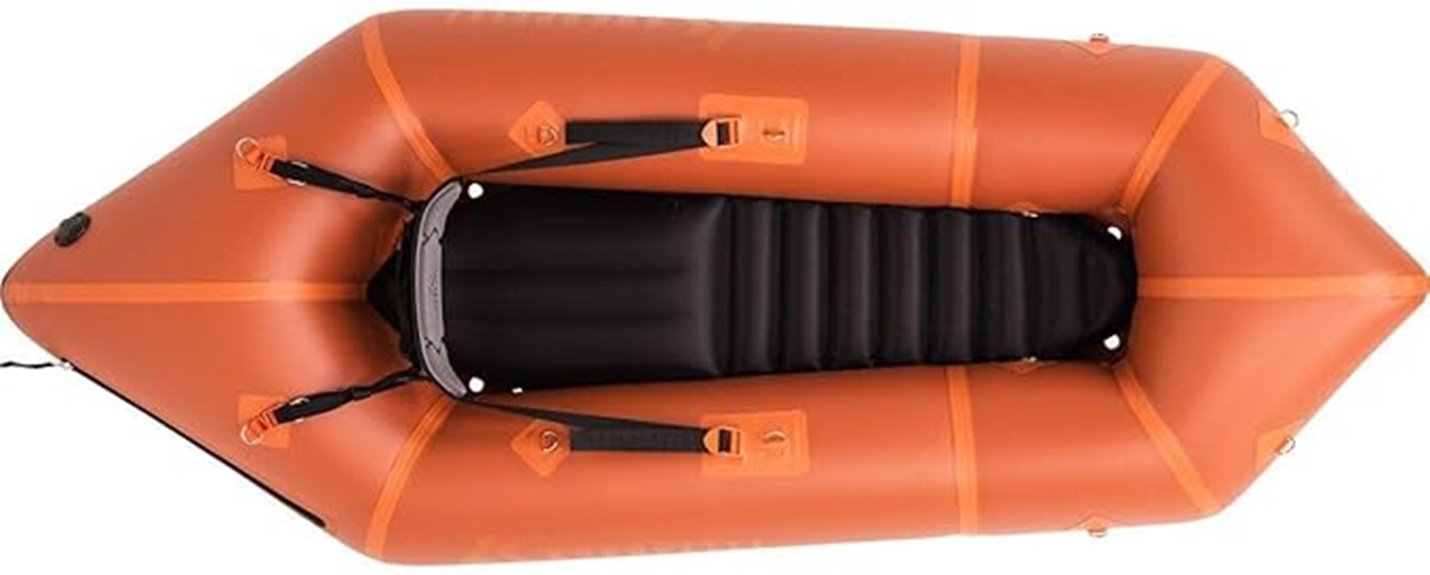
Serious packrafters who need a durable self-bailing vessel will appreciate Kokopelli’s Recon model, constructed from rugged PVC material. This unisex packraft features a classic style design with impressive dimensions of 30 x 22 x 8 inches when packaged.
Despite its substantial 23.75-pound weight, you’ll find this self-bailing raft delivers reliable performance for demanding water conditions. Released in March 2023, the Recon currently ranks #165 in inflatable rafts, reflecting its position as a specialized piece of adventure gear. The Red Rocks colorway offers high visibility on the water while maintaining the raft’s professional appearance.
Best For: Experienced packrafters and adventure enthusiasts who need a durable, self-bailing watercraft for challenging river conditions and extended wilderness expeditions.
Pros:
- Heavy-duty PVC construction provides excellent durability for rough waters
- Self-bailing design helps manage water efficiently during rapids
- Generous dimensions offer good stability and cargo capacity
Cons:
- Relatively heavy at 23.75 pounds, impacting portability
- Higher price point compared to basic recreational rafts
- Requires more storage space than ultralight packraft alternatives
Inflatable TPU PackRaft Kayak/Canoe
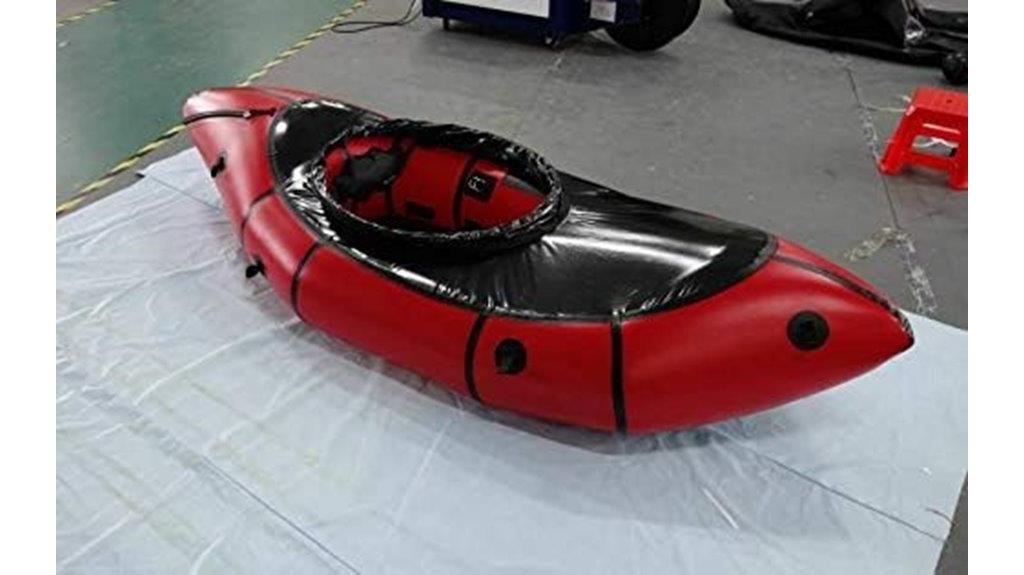
For adventurous solo paddlers seeking lightweight versatility, this Inflatable TPU PackRaft delivers exceptional portability at just 3.5 kg while offering impressive durability through its dual-layer construction.
The raft’s robust build features 420D 0.42mm TPU tubes and an 840D 0.65mm TPU floor, providing enhanced resistance against punctures and abrasion. You’ll appreciate the spacious 170cm interior length and customizable options, including a spray skirt and cargo storage solutions. The packraft’s environmentally friendly materials remain flexible in cold conditions while resisting UV damage and aging. Multiple upgrade options let you tailor the craft to your specific paddling needs.
Best For: Solo paddlers and outdoor enthusiasts who prioritize portability and want a lightweight, versatile watercraft for lakes, rivers, and backcountry adventures.
Pros:
- Extremely lightweight at 3.5kg, making it highly portable and easy to transport
- Durable dual-layer TPU construction with reinforced floor for puncture resistance
- Extensive customization options with multiple available upgrades for different uses
Cons:
- Limited seating capacity of one person
- Generic/unbranded manufacturer may raise quality consistency concerns
- Basic model requires additional purchases for advanced features like spray skirt and cargo storage
Inflatable Lightweight TPU Two Person River Micro PackRaft Kayak Canoe

Weighing just 11.9 pounds, this versatile two-person packraft delivers exceptional portability for adventurous pairs seeking backcountry water exploration. You’ll appreciate the rugged construction featuring 420D TPU tubes, reinforced 840D TPU floor, and urethane-coated nylon seat.
At 350cm long and 94cm wide, this packraft offers stability while remaining compact. You can enhance your setup with optional upgrades including a spray skirt, cargo zipper system, and thigh braces. The 6-point supportive backrest guarantees comfort during extended paddling sessions. The removable seats and modular design let you adapt the craft for solo or tandem adventures.
Best For: Adventurous pairs and solo paddlers seeking a lightweight, portable craft for backcountry water exploration and river touring who value versatility and easy transport.
Pros:
- Extremely lightweight at 11.9 pounds, making it highly portable
- Durable construction with reinforced TPU materials and floor
- Highly customizable with multiple upgrade options and convertible seating
Cons:
- Generic brand may lack established customer support
- Basic model requires several upgrades for advanced features
- Limited color options available
DA-255 Inflatable White Water River Micro PackRaft Kayak Canoe New

The DA-255 Micro PackRaft delivers exceptional portability while packing professional-grade features into its compact 250cm x 96cm frame. At just 3.5kg, this single-person craft combines durability with lightweight performance through its 420D TPU tube construction and reinforced 840D TPU floor.
You’ll appreciate the 6-point inflatable backrest with quick-release functionality, designed for ideal paddling position. The craft’s versatility extends through multiple upgrade options, including a spray skirt, cargo storage, and thigh braces. Built with UV-resistant, non-aging materials, the DA-255 maintains flexibility in cold conditions while meeting environmental standards.
Best For: Adventure enthusiasts and white water rafters seeking a lightweight, portable single-person craft that balances durability with ease of transport.
Pros:
- Extremely lightweight at 3.5kg, making it highly portable
- Comprehensive upgrade options for customization
- Durable construction with reinforced TPU materials
Cons:
- Basic model requires multiple upgrades for advanced features
- Limited seating capacity (single person only)
- Premium upgrades can significantly increase total cost
Factors to Consider When Choosing What Packrafts Are
I’ll help you select the ideal packraft by examining five critical factors that determine performance and reliability. When evaluating your options, you’ll need to assess the durability of materials like 210D nylon or TPU-coated fabrics, weight specifications ranging from 2-8 pounds, and intended usage scenarios from flat water to Class III rapids. The final decision comes down to matching your specific needs with the appropriate load capacity (typically 250-600 pounds), along with considering included storage features and essential accessories like spraydeck attachments and cargo tie-downs.
Material and Construction Quality
When selecting a packraft for your adventures, understanding material composition and construction quality becomes paramount for durability and performance. I’ve found that TPU and PVC materials offer different advantages, with TPU typically providing better weight-to-durability ratios.
I recommend paying close attention to denier ratings. A 420D material offers good durability for casual use, while 840D provides enhanced protection for more challenging conditions. The fabric choice matters substantially – ripstop nylon and urethane-single coated nylon are top performers in the field.
Don’t overlook construction methods. I always check for double-reinforced adhesive tape and properly stitched and welded seams. These features dramatically impact air retention and long-term durability. Look for reinforced stress points and consistent seam quality throughout the packraft’s construction.
Weight and Portability Specs
Understanding packraft weight and portability specifications requires careful consideration of key metrics that directly impact your carrying capacity and travel logistics. I’ll help you navigate the weight ranges, which span from ultralight 2.7kg models to heavier 23.75kg variants.
When I evaluate packrafts, I consider both packed size and material composition. TPU construction offers a perfect balance of durability and weight savings. For example, I’ve found that models like the Kokopelli Rogue Spraydeck compress to just 17 x 8 inches, making them ideal for backpacking. If you’re prioritizing minimal weight, ultra-lightweight options around 5.5 pounds exist, though they may sacrifice some durability. I recommend selecting a weight and packed size that aligns with your specific adventure needs and carrying capacity.
Intended Use and Waters
The right packraft for your adventures depends heavily on the water conditions you plan to tackle. If you’re heading out on calm lakes or slow-moving streams, I recommend choosing a model that prioritizes stability and comfort with a wider beam. For whitewater enthusiasts, you’ll want a more maneuverable craft with self-bailing features and a spray deck to keep you dry.
I’ve found that multi-day expeditions require careful consideration of storage capacity and customization options. Look for packrafts with adjustable seating and dedicated storage compartments if you’re planning extended trips. For fishing and camping applications, I suggest selecting a model with enhanced stability and a higher weight capacity. The key is matching your specific activities – whether that’s running rapids or crossing alpine lakes – to a packraft that’s purposefully designed for those conditions.
Load Capacity Limits
Load capacity stands as a crucial factor that determines both safety and performance in packraft selection. I’ll help you understand how to choose the right capacity for your needs. Most recreational packrafts offer weight limits between 250-400 pounds, while expedition models can handle up to 600 pounds.
When evaluating load capacity, I recommend calculating your total weight including gear, food, and water. You’ll want to stay at least 20% below the maximum rating to maintain peak performance. For example, if you weigh 150 pounds and carry 50 pounds of gear, you’ll need a packraft rated for at least 250 pounds. Remember that exceeding capacity limits affects tracking, maneuverability, and freeboard – the distance between the waterline and the top edge of your boat.
Storage and Accessories
Smart storage and essential accessories transform a basic packraft into a fully functional expedition vessel. I recommend focusing on three key storage areas: bow bag attachments (4-6 liters), stern storage (10-15 liters), and deck rigging options for quick-access gear. You’ll want D-rings rated for at least 100 pounds and military-grade attachment points.
For accessories, I’ve tested dozens of combinations and found these essentials: a repair kit with patch material and adhesive, a high-capacity pump (manual or electric), secured flotation bags, and tie-down straps rated at 250+ pounds. I also suggest investing in a spray deck for rough water and a proper storage bag for transport. Remember to get paddle holders – they’re often overlooked but vital for when you need your hands free while on the water.
Price Vs Feature Comparison
When selecting a packraft, price points typically range from $500 to $2500, with distinct feature sets at each tier. Entry-level models ($500-800) offer basic construction with single-layer fabric and minimal accessories. You’ll find these suitable for calm waters and occasional use.
Mid-range options ($800-1500) provide better durability with double-layer bottoms and spray decks. I’ve found these packrafts include cargo tie-downs, multiple air chambers, and improved weight capacity – typically supporting 400-500 pounds.
Premium packrafts ($1500-2500) feature advanced materials like carbon fiber seats and specialized coatings. You’ll get whitewater-ready designs with thigh straps, reinforced hulls, and self-bailing systems. These high-end models often include custom features like removable spray skirts and tracking fins for enhanced performance.
Frequently Asked Questions
How Long Does the Average Packraft Last Before Needing Replacement?
I’ve found that a well-maintained packraft typically lasts 3-5 years with regular use, though I’ve seen some last up to 10 years if you’re careful with repairs and storage.
Can Packrafts Be Used in Saltwater Environments?
Yes, I can take my packraft into saltwater, but I’ll need to rinse it thoroughly afterward to prevent corrosion. Most modern packrafts use saltwater-resistant materials, making ocean adventures totally possible.
What Certifications Should I Look for When Buying a Packraft?
I recommend looking for ISO 6185 certification for safety standards, ASTM compliance for durability testing, and CE marking if you’re buying in Europe. NMMA certification is also valuable.
How Do Packrafts Compare to Traditional Kayaks for Fishing?
I’ll tell you that packrafts offer superior portability and access to remote spots, while traditional kayaks generally provide better stability, storage, and tracking for serious fishing adventures.
Are Packrafts Suitable for Winter and Cold-Weather Expeditions?
I’d say packrafts work great for cold-weather trips when paired with proper thermal gear. I’ve used mine during winter with a drysuit and insulated layers underneath for full protection.
Conclusion
I’ve closely reviewed today’s best packrafts to help streamline your buying decision. While each model offers unique advantages, I recommend focusing on your specific needs around weight capacity, intended usage, and portability requirements. Consider durability features like TPU versus PVC construction, packed size dimensions, and spray deck options. With proper research using these key factors, you’ll find the ideal packraft for your adventures.


